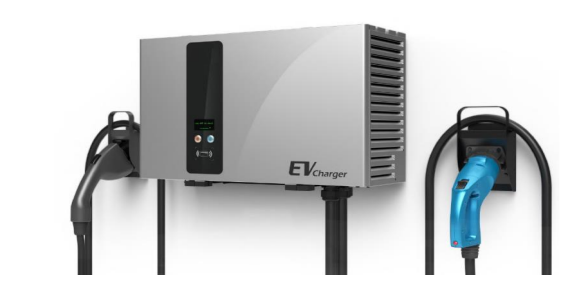SMART MICRO GRID
Introduction
Our Smart Microgrid Lab is a cutting-edge facility designed for hands-on experimentation with localized electrical grids. It integrates advanced control systems and distributed energy resources (solar, wind, and hydrogen fuel) to generate, store, and manage electricity. Supporting both AC and DC architectures, the lab enables flexible testing of multi-source energy integration and modern grid configurations.
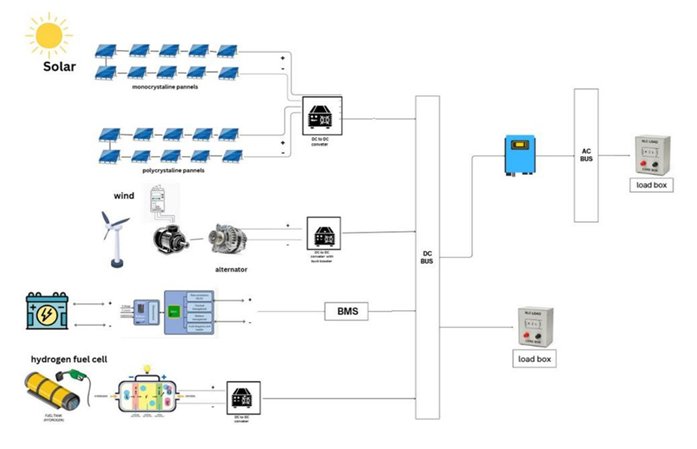
System Architecture
AC/DC Microgrid System Architecture
A hybrid AC/DC microgrid integrating renewable sources, storage,
loads, and intelligent monitoring for reliable operation.
- Power Sources: Solar PV, Wind, Auxiliary & Utility supply with MPPT optimization.
- Energy Storage & Emulation: Lithium/Lead batteries and EV emulator.
- Power Conversion: DC/DC, DC/AC, AC/DC, and Bi-directional converters for flexible power flow.
- Grid Interface: Supports AC & DC grids with protection and relay management.
- Loads: Supplies both AC and DC loads.
- Monitoring & Control: Sensors, DAQ, and communication protocols linked to RT server.
- Overall: Provides stable, efficient operation and renewable energy integration.
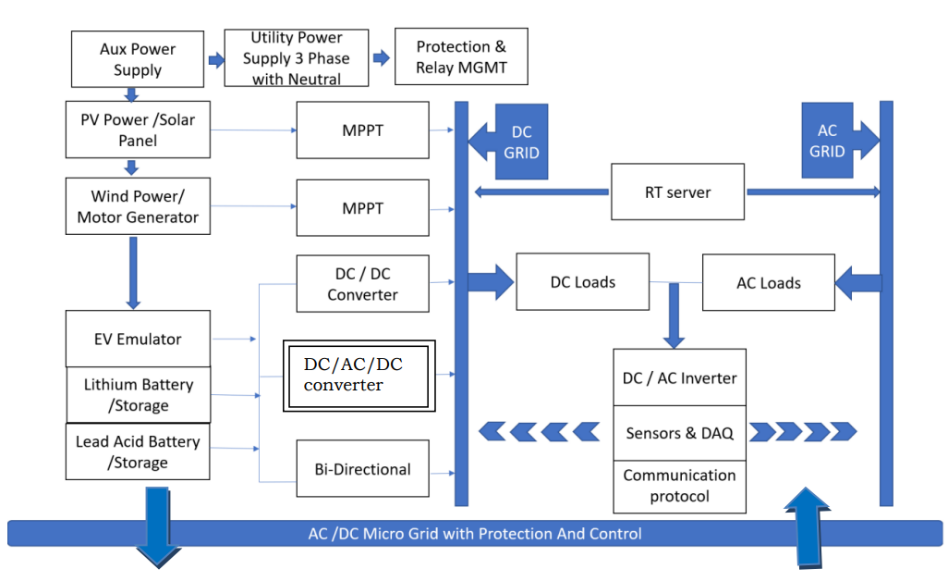
Core Components
- Bidirectional Inverters/Chargers: Enable smooth AC/DC conversion and interaction with the grid.
- Renewable Source Controllers:DC-DC modules connect solar and wind sources to the central 48 V bus.
- Fuel Cell Integration Converter: Boosts hydrogen fuel cell output to the system bus.
- DC Distribution & Protection: Safeguards circuits with fuses and intelligent branch management.
- Control & Data Logging System: Provides real-time monitoring, automated control, and remote accessibility.
Solar OFF grid and ON grid system
Solar Off-Grid System: Works independently with solar panels and batteries, ideal for remote areas without grid access.
Solar On-Grid System: Connected to the utility grid, feeds excess power back and draws electricity when needed, ensuring cost efficiency.
- Solar Panel - Converts sunlight into DC electricity.
- DC Junction Box - Collects DC power from solar panels.
- Inverter - Converts DC to AC Power
- Load Box - Represents the electrical loads
- Solar Charger with MPPT (Maximum Power Point Tracking)
- Battery - Provides backup power during grid failure (OFF-Grid Mode)
- AC Grid (ON-Grid) - If solar power is insufficient, loads draw power from the grid. Extra solar power can be fed back to the grid.
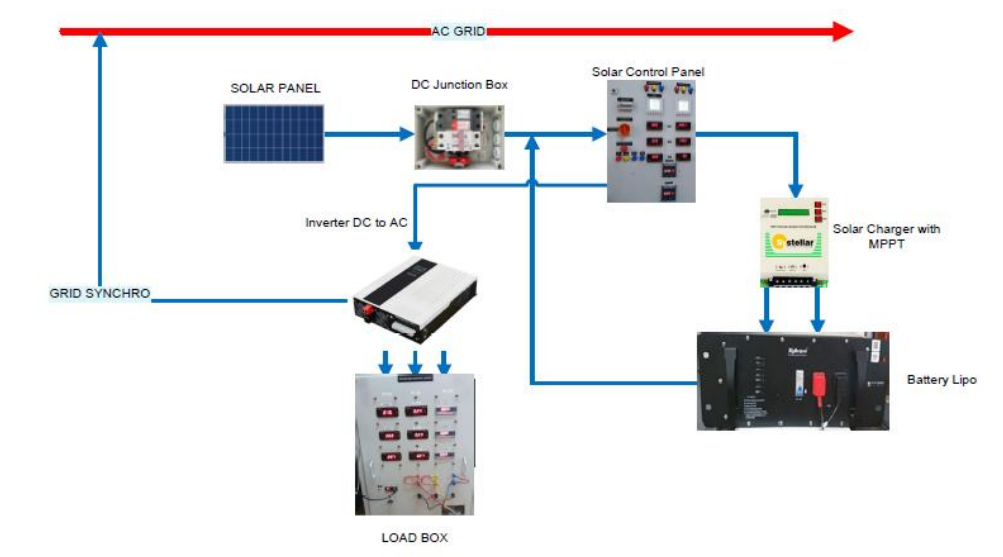
Solar PV Integration
PV Cell converts sunlight directly into electricity using the photovoltaic effect. It forms the basic building block of solar panels and enables clean, renewable energy generation for residential, commercial, and industrial applications.
- DC-Coupled Solar PV (3 kW): Connected to the 48 V DC bus via a high-voltage DC-DC charge controller for efficient energy management.
- AC-Coupled Solar PV (3 kW, 5 kVA): Grid-tied inverter enables seamless integration with the utility grid and system bus for renewable support and hybrid energy experiments.
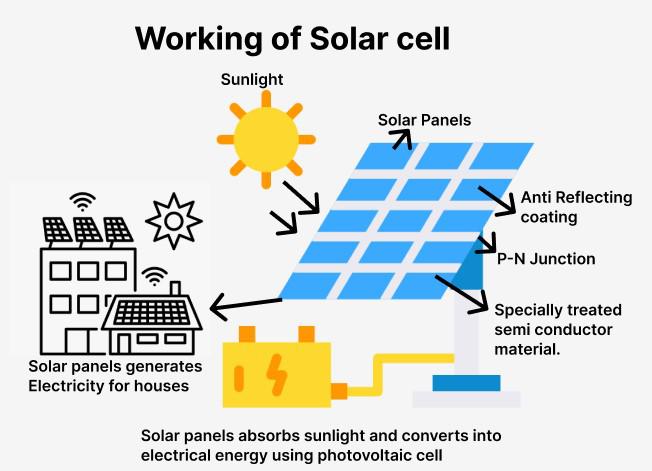
Hydrogen Fuel Cell
A hydrogen fuel cell is an electrochemical device that converts hydrogen and oxygen directly into electricity, with water and heat as the only by-products. Hydrogen fuel cells enhance smart microgrids by providing flexible energy storage and reliable backup power, improving stability and resilience. Excess renewable energy is stored as hydrogen through electrolysis and later converted back to electricity by fuel cells, ensuring steady power supply, outage support, and a sustainable low-emission energy ecosystem
Applications
- Transportation: Cars, buses, trucks, trains, ships, and drones with zero emissions.
- Stationary Power: Backup power, microgrids, and combined heat & power for homes and industries.
- Industrial Use: Forklifts, material handling, and renewable energy storage.
- Grid Support: Energy storage, peak shaving, and renewable integration.
- Military: Portable power solutions and defense applications.
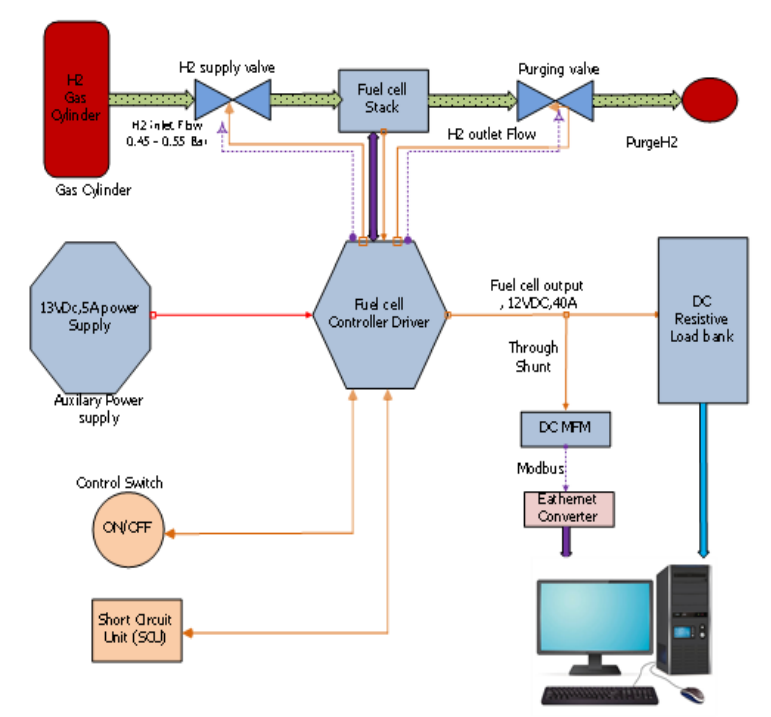
Wind Emulator
Wind Emulator allows for the evaluation of energy management power converters without the complexity and expense of using a real wind turbine, which is essential for integrating and stabilizing renewable energy sources in micro grids.
The Wind Emulator System features a Variable Frequency Drive (VFD) to control motor speed, coupled with a Motor-Generator Wind Controller for precise turbine simulation. A 3-Phase AC Synchronization Scope monitors phase, voltage, and frequency for grid integration. The system includes an AC grid interface for synchronization and a wind blower with fan, which generates airflow to drive the generator, enabling realistic wind turbine testing and performance evaluation.
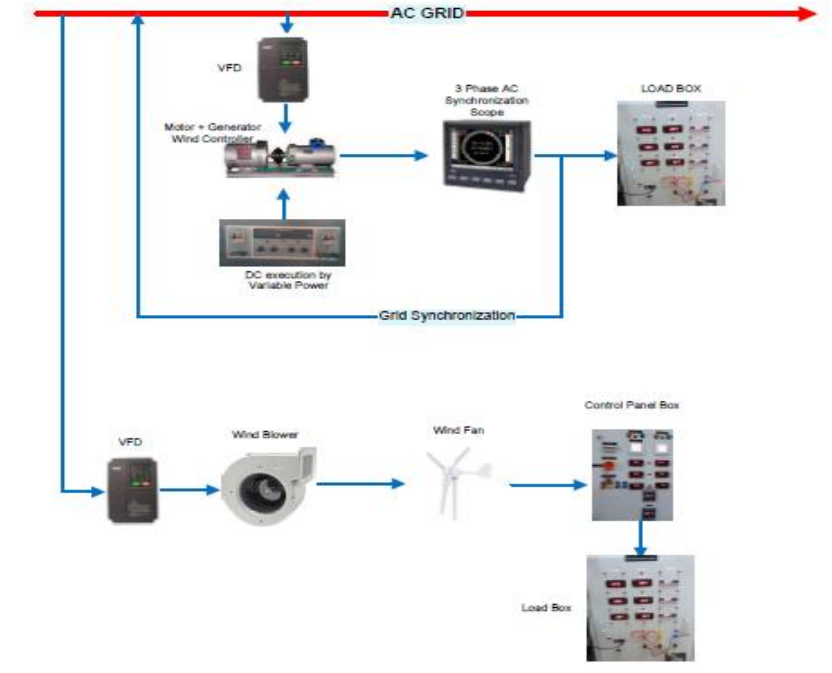
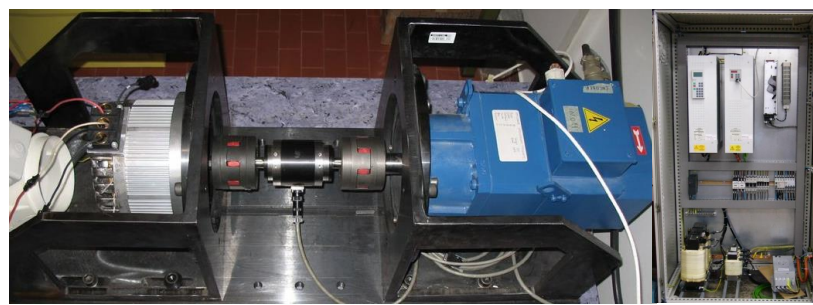
cDAQ
It is used for real-time monitoring and data acquisition of voltage, current, power, and environmental parameters. Supports distributed measurements, fault detection, energy management, and performance analysis of renewable energy sources, storage systems, and microgrid operations.
I/O Modules
I/O Modules Enable real-time measurement and monitoring of voltage, current, power, and environmental signals. Support data acquisition from renewable sources, storage systems, and loads for energy management, fault detection, and grid performance analysis.
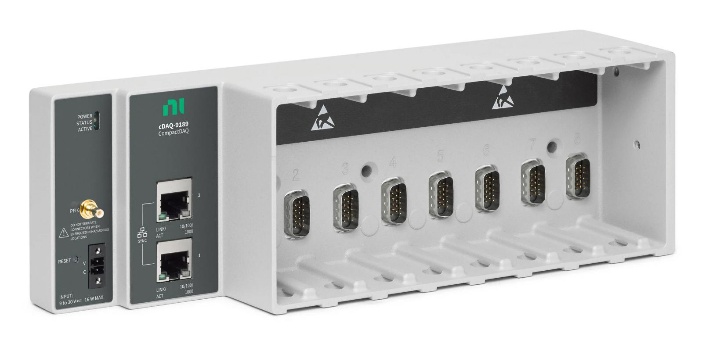

Battery Energy Storage System
Stores electrical energy for later use, providing load balancing, peak shaving, and backup power. The system features a Smart Battery Management System (BMS) with analytics for State of Charge (SoC) and State of Health (SoH), providing valuable insights into battery performance and lifecycle.
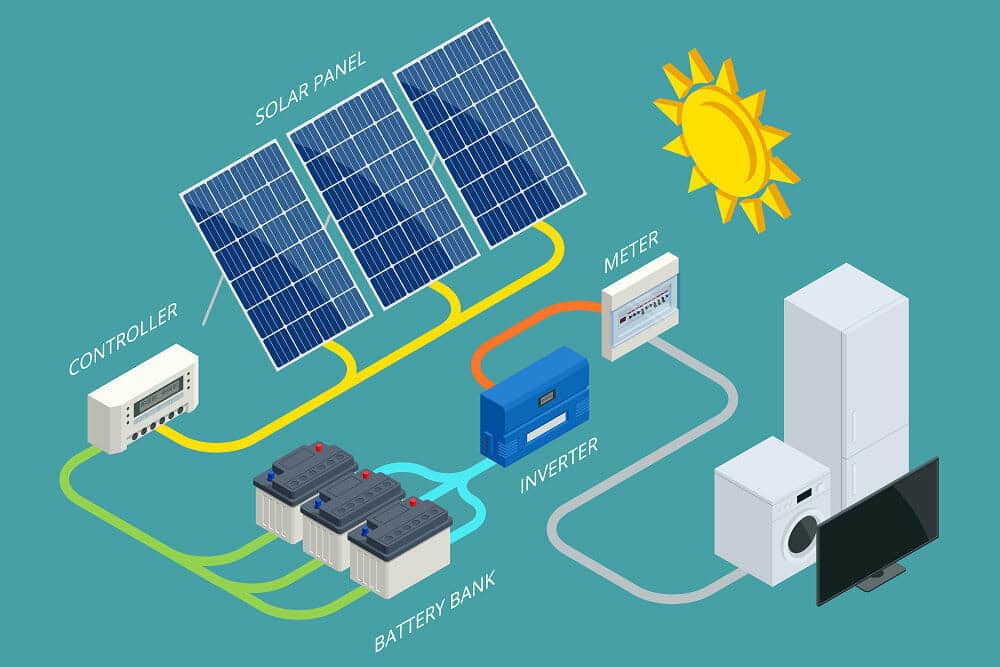
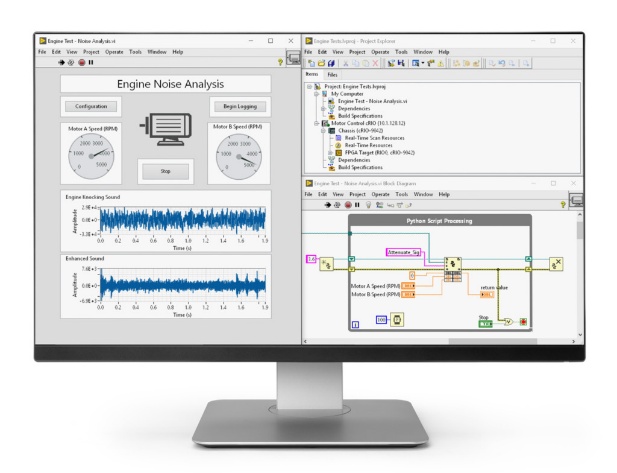
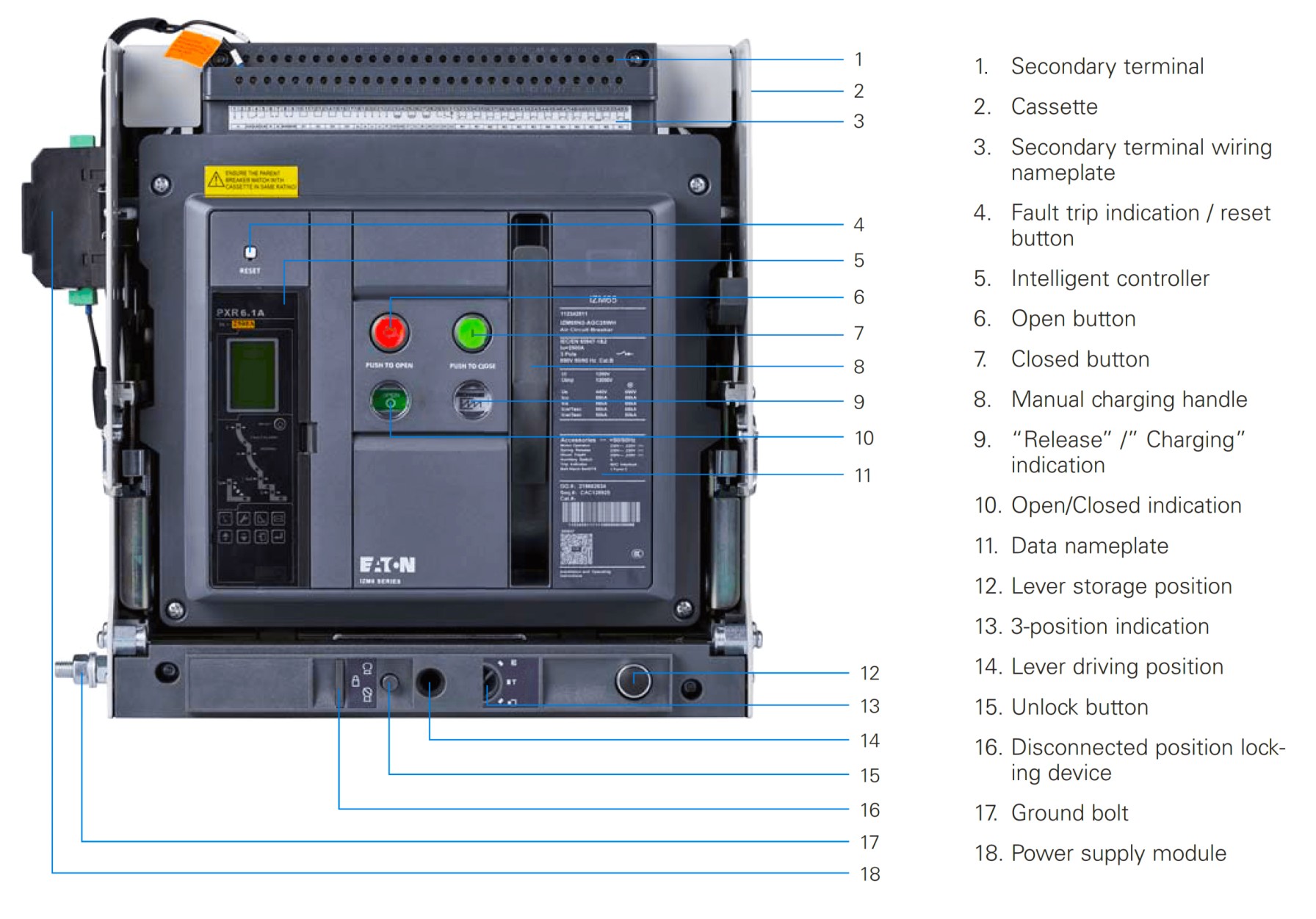
List of Experiments to be performed:
- Effect of irradiance and temperature on PV output
- Maximum Power Point Tracking (MPPT)
- Grid-tied inverter performance
- Power injection and synchronization with grid
- Grid fault response and protection analysis
- Standalone PV system with battery storage
- Load management and peak shaving in off-grid PV
- Wind turbine performance under variable wind speeds
- Turbine control algorithm testing
- Hybrid system integration (PV + Wind + Battery)
- Fuel cell integration with DC bus
- Load response and hybrid system testing
- Real-time monitoring with cDAQ/I/O modules
- Variable speed operation with Motor-Generator set
- Simulation of microgrid and renewable integration
- Multi-source energy management and load sharing

